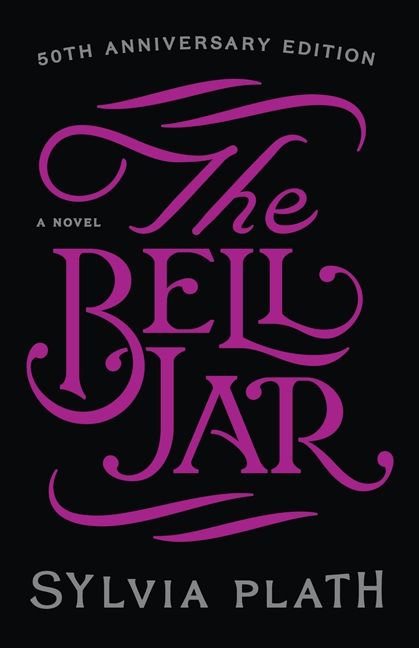 The Bell Jar
The Bell Jarby Sylvia Plath
reviewed by Brenna Derbish
The Bell Jar by Sylvia Plath is a gripping read about what happens when someone too young stops believing in the goodness of life. The novel itself holds you and refuses to let you go, using plenty of figurative language to take readers on a disturbing journey from cover to cover. It’s almost frightening how quickly the protagonist’s life reshapes into a hopeless monotony. This book is, to me, best read in small pieces, which allows the reader to think deeply and digest the piece before moving on to a new area of the book. This book is an autobiography of Plath’s own descent and supposed recovery from depression, and while a masterful read, it is best enjoyed like one’s favorite food. In small portions.
While this is true, I think I may have found one of my new favorite books in Plath’s masterpiece. The story itself propels you into the world of Esther Greenwood, a young woman who appears to be a representation of Plath herself. Seemingly at the happiest time of her life, Esther has been invited to New York because of a fashion magazine contest, and gets the prime life in the Big Apple. Expensive presents, tickets to shows and events, and a beautiful all women hotel to stay at: The Amazon. But even here, Esther isn’t happy. She craves something else out of her life, other than the simple humdrum routine. Throughout the novel, certain events, such as being forced to endure a shock treatment, and certain people, such as her overly cheerful college boyfriend, Buddy Willard, and her judgemental mother cause her to tumble into a deep despondency. The climax comes when Esther, at the lowest point, tries to commit the inconceivable. Suicide. She is relocated to a mental hospital, where she seems to start doing better and reemerging into some form of her previous life.
Reading the book as a 20th century reader, however, Plath’s book seems like a cry for help. As the title states, Plath oftens refers to herself as “sitting under the same glass bell jar, stewing in my own sour air.” (Plath, 152) This quote, which comes a bit later in the book, is the first of many references to a simple glass jar that Esther believes she is trapped under. Trapped inside her darkening mind, she is able to see and hear other people but is unable to ask for help. She is so close to being able to connect, but wherever she goes she will always remain stuck inside her own head. By writing about herself in the third person, it makes me wonder if she was trying to warn someone about her last suicide attempt, which resulted in her death. Throughout the book, Plath talks about crippling depression and suicide as if they are completely mundane things, and had you known Esther, you would’ve never really thought that she would be the one to attempt suicide. There are a lot of moments in this book where Plath masterfully makes the reader think what they haven’t noticed about others in their own life.
In reality, while the level of the language is understandable for 8th grade and up, I would not recommend reading this book until you feel you’re ready. This is indeed, as people say, “heavy reading”, and the themes in this book are impossible to take lightly. However, I feel readers who are searching for an example of literature’s depth and majesty should definitely read this book. For a first novel, Plath crafts her simple language in remarkable and rhythmic ways. There will be a weight on your chest while reading this book, but ultimately it is one of the best of literature (at least in my opinion) and would be a thought provoking read for mature readers.
No comments:
Post a Comment